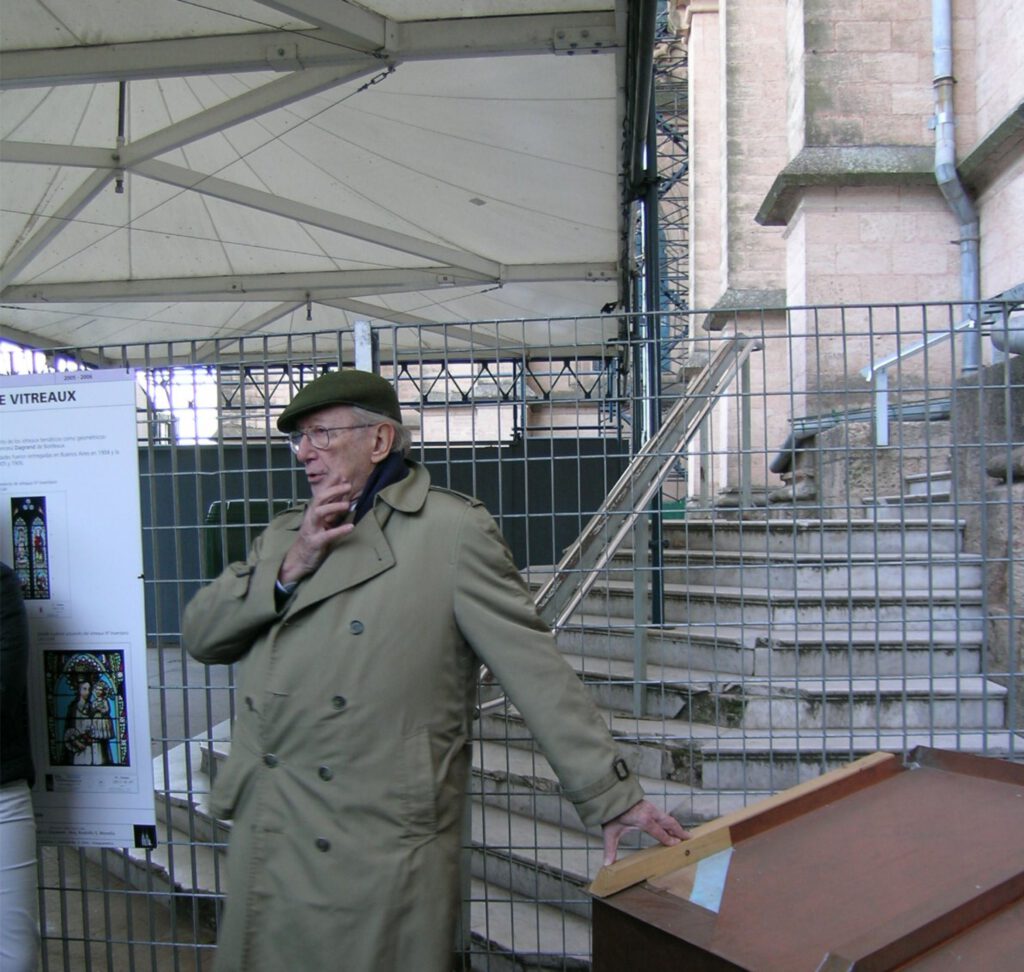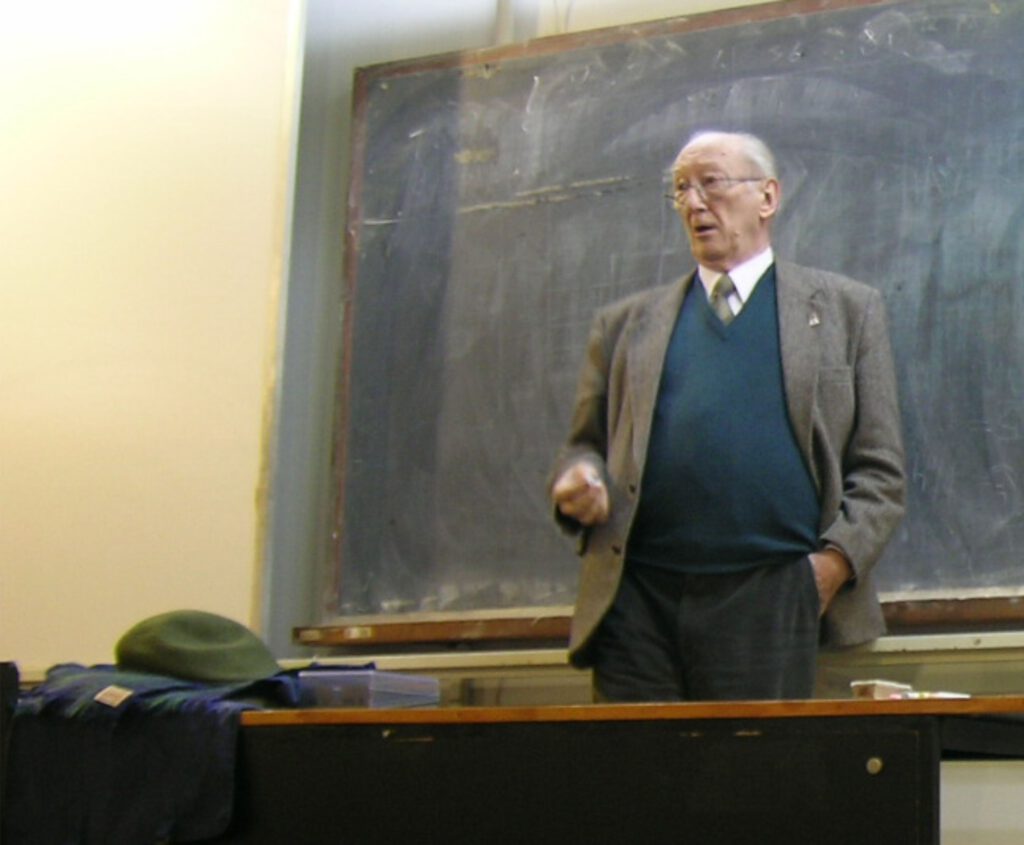Jorge O. Gazaneo, 1928-2022
It is with sadness that DOCOMOMO International announces the passing away of architect Jorge O. Gazaneo. Below is an obituary by DOCOMOMO honorary president, Hubert-Jan Henket. Photos by Carolina Quiroga.

It was a fabulous summer’s day, the 3rd of September 1990. Delegates from 12 countries, interested in the ideas and conservation of the Modern Movement heritage, gathered at the Eindhoven University in the Netherlands for the first time, which later became known as the inaugural international DOCOMOMO Conference. As I was welcoming the audience in the opening speech of the conference I proudly mentioned the 12 countries present in alphabetical order, when suddenly at the back of the auditorium a young woman shouted: ”Sorry to interrupt, but you are not here together with 12 countries, we are here with 13 countries.” I asked her: ”Please come forward”. She came and introduced herself as Stella Maris Casal from Argentina and handed me a letter with a DOCOMOMO Argentina letterhead. It was signed by Prof. Jorge Gazaneo and Prof. Mabel Scarone of the faculty of Architecture of the University of Buenos Aires. I read the content to the surprised delegates asking if Argentina could join our initiative. A loud burst of applause signifying everyone’s approval was the result and thus the founding countries of our beloved organisation added up to thirteen.
Now sadly Jorge Gazaneo has passed away at the age of 93, but the echo of that applause still reverberates loud and clear. It is our token of admiration, respect and love for this honoured gentleman and international authority.

Born in Buenos Aires in 1928 and raised during his first years in England (Barrow-Furness), he graduated at the University of Buenos Aires in 1955 as an architect. It was here that he met Mabel Scarone, his lifelong love and his professional and scientific sparring partner. In the same year he joined the studio of the modern Argentinian architect Amancio Williams whom he admired dearly. Gazaneo’s interest in the ideas of the Modern Movement was triggered primarily by the Bauhaus inspired courses he attended at the University of Buenos Aires, which he continuously developed further among others during his research in modern industrial and rural architecture in the Americas under the mentorships of Mario J. Busschiazzo at the University of Buenos Aires, Walter Gropius at Harvard and Louis Kahn at the University of Pennsylvania.
He was one of the first to dispute the universality of the Modern Movement pointing at local circumstances such as geography, climate, vegetation, building tradition and inherited identities. As he said in his presentation at the 4th international DOCOMOMO conference in Sliac, Slovakia: “Argentina – as the cases of Mexico and Brazil can also show-points to different approaches stemming from deep-rooted national identities from the past. These, mainly in the form of a folk architecture, were to play a significant role in the evolution of modern architectural design.”
He became a powerful voice representing the Latin American countries in the field of Modern architecture, architectural history and the preservation of 19th and 20th century architecture. He was a board member of ICOMOS international and later appointed an honorary member. Directly after the return to democracy in 1983 he was asked by the President of Argentina to become the south American representative on the committee of the World Heritage Convention. Afterwards he chaired the WHC for several years.
In the field of conservation, he was involved in many national and international projects such as the improvement of the Jesuit Missions in Argentina, Paraguay and Brazil and the strategic plan for San Juan de Puerto Rico. His last big project was the restoration of the basilica of Nuestro Senora de Luján in the region of Buenos Aires. He also designed the post graduate course on conservation and rehabilitation at the University of Buenos Aires.
Both Mabel Scarone and Jorge Gazaneo were Cáthedra Profesor at the Faculty of Architecture of the Universities of Buenos Aires and la Plata. Individually and together, they were responsible for many influential books and publications.
Particularly memorable is the extraordinary adoration of Gazaneo’s students and assistants for his character, his inspiring lectures and his conversations ranging from architecture via film to food. I clearly experienced his beautiful humanity first hand when I lectured in Buenos Aires at Gazaneo’s invitation.
His openness, his positive outlook, his inspiration and wit will be missed by many, in particular by the old guard of the DOCOMOMO family. In the first 12 years of our existence, he helped us tremendously with his impressive international experience, his knowledge, his network and his diplomatic advice.
Unforgettable was Gazaneo’s presentation at the Slovac Tango competition which we held in 1996 in Sliac. All of us took tango lessons at home and we kept on training till the last moment in the venue of the conference, when suddenly from behind the curtains entered Gazaneo’s impersonation of Carlos Cardel, the King of Buenos Aires tango. Dark suit, white pochette, a hat tilted on his head, and on his arm Maija Kairamo from Finland, beautifully dressed. In an elegant three minutes performance he showed us what tango was really all about. That was Jorge Gazaneo, the world was his playing field, Latin American heritage and modern architecture his focus, Buenos Aires his home and Mabel Scarone his beloved wife who gave him their two sons.
Jorge, on behalf of the DOCOMOMO family, thank you so much for all you did for us and the blunders you helped us to avoid in the first years of building our reputation. Do you hear the echo of our ongoing applause? That is for the memory of you, which will remain in our hearts as long as we live.
Hubert-Jan Henket,
Honorary president DOCOMOMO International.

